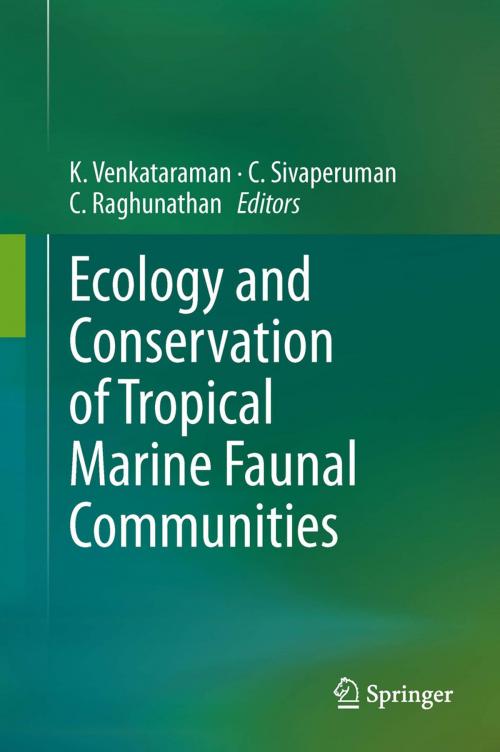Ecology and Conservation of Tropical Marine Faunal Communities
Nonfiction, Science & Nature, Science, Biological Sciences, Ecology, Nature, Environment, Environmental Conservation & Protection| Author: | ISBN: | 9783642382000 | |
| Publisher: | Springer Berlin Heidelberg | Publication: | September 12, 2013 |
| Imprint: | Springer | Language: | English |
| Author: | |
| ISBN: | 9783642382000 |
| Publisher: | Springer Berlin Heidelberg |
| Publication: | September 12, 2013 |
| Imprint: | Springer |
| Language: | English |
This book provides insights into various aspects of marine faunal communities in India, which are extremely diverse due to the geomorphologic and climatic variations along the Indian coasts. Consisting of 30 chapters by experts in their respective fields, it is divided into two parts:
· Part I: Tropical Marine Faunal Communities
· Part II: Ecology and Conservation
Part I highlights the diversity and distribution of Foraminifera; sponges associated with seagrass; Polychaeta; Opisthobranchia; oysters; copepods; horseshoe and brachyuran crabs; echinoderms; ascidians; fishes; fish parasites; and sea mammals. Topics of Part II include the status and environmental parameters of benthos; the status of coral reefs; the invasion of snowflake coral; the recovery of bleached corals; the socioeconomics and management of dugong; marine biodiversity conservation and management in India; the assessment of the marine fauna of the Indian Wildlife Protection Act; and marine biodiversity protected areas in India.
This book will serve as a valuable reference work for marine scientists, as well as for environmental managers and policy makers.
This book provides insights into various aspects of marine faunal communities in India, which are extremely diverse due to the geomorphologic and climatic variations along the Indian coasts. Consisting of 30 chapters by experts in their respective fields, it is divided into two parts:
· Part I: Tropical Marine Faunal Communities
· Part II: Ecology and Conservation
Part I highlights the diversity and distribution of Foraminifera; sponges associated with seagrass; Polychaeta; Opisthobranchia; oysters; copepods; horseshoe and brachyuran crabs; echinoderms; ascidians; fishes; fish parasites; and sea mammals. Topics of Part II include the status and environmental parameters of benthos; the status of coral reefs; the invasion of snowflake coral; the recovery of bleached corals; the socioeconomics and management of dugong; marine biodiversity conservation and management in India; the assessment of the marine fauna of the Indian Wildlife Protection Act; and marine biodiversity protected areas in India.
This book will serve as a valuable reference work for marine scientists, as well as for environmental managers and policy makers.















